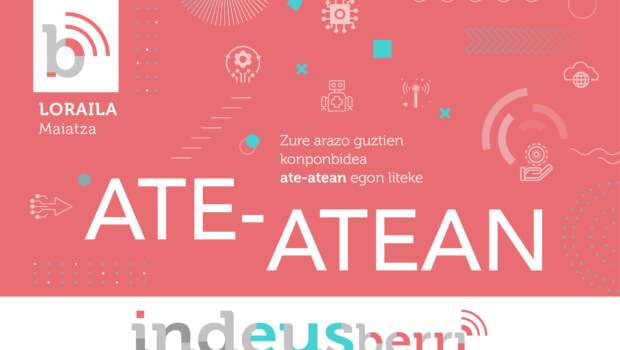
Programa Impact Hub Donostiak bultzatzen du eta 2024ko maiatzetik urrira garatuko da dohainik, Gipuzkoako Foru Aldundiren laguntzari...
Eusko Jaurlaritzako Ekonomiaren Garapen, Jasangarritasun eta Ingurumen Saileko erakundea, euskal industria bultzatzea helburu duena.
Zurea bezalako enpresekin lan egiten dugu, errazago murgildu zaitezen digitalizazioan eta zibersegurtasunean eta laguntza bat izan dezazun martxan jartzean. Zurekin batera, modu onena bilatzen dugu zure negozioa beste herrialde batzuetara zabaltzeko edo zure kokaleku bihurtu daitezkeen espazio fisiko, pabilioi nahiz bulegoak aurkitzeko.
Badauzkagu erronkei aurre egiteko baliabideak, eta badaukagu bidea planifikatzen laguntzen digun ikuspegi global bat. Hemen aurkituko duzu adituen laguntza, eta baita ere gure konpromisoa zure proiektuan inplikatzeko.
Digitalizazio-estrategiak sartu nahi dituzu zure negozio-ereduan?
Startup bat martxan badaukazu, ideia bat baduzu edo bazkide bila bazabiltza
Finantza arloko zailtasunak dituzten ETEentzat, hazten ari diren enpresentzat…
Orain arte zeneuzkanak baino produktu hobeak garatzen dituzu
Enpresan hobekuntza bat egin nahi baduzu edo aurten bultzatzen ditugun 500 proiektu berritzaileetan parte hartu nahi baduzu
Txiki gelditu da zuen lantegia? Bulegoak, pabilioiak eta espazio modularrak abantaila bereziekin
16 bulego propio eta 80tik gora herrialdetara hedatzen den kanpo-sare bat zure nazioarteko zabalkundea azkartzeko.
Inbertitu Euskadin, negozioak egiteko eskualde onenetako batean
Babestu zure lan-ingurunea eta, intzidentziaren bat detektatzen baduzu, deitu gure larrialdietako telefonora
16 Kluster eta Klusterren Dinamizaziorako Erakunde (KDE)
Zure enpresarentzat garrantzitsua den eguneroko informazioa

Programa Impact Hub Donostiak bultzatzen du eta 2024ko maiatzetik urrira garatuko da dohainik, Gipuzkoako Foru Aldundiren laguntzari...

Enpresa donostiarrak konpainien lehiakortasuna hobetzeko soluzio teknologikoak eskaintzen...

Online egingo dira maiatzaren 13tik ekainaren 25era...

Hernaniko konpainiak sei bider handitu du fakturazioa lau urtean...

Arabako enpresak, nazioarteko presentzia zabalarekin, hainbat osagai fabrikatzen ditu...

Gaur albiste dira Elkarrengandik Ikasiz solasaldiak, EGA Master, Latxa eta Zero...

KABIAk pertsonei eta haien proiektuei laguntzeko, sortzeko, hazteko eta sendotzeko helburua du. Eusko Jaurlaritzak, HAZIren bidez, bultzatutako proiektua da, eta lurraldearen laguntzarako erakundeen...

Euskadiko talentu ekintzaile guztia. Wake up! -ek komunikabide eta sareko blog desberdinek argitaratutako albisteen hautaketa txiki bat egunero partekatzen du Linkedinen: ideiak, proiektuak,...
Enpresen Garapenerako Euskal Agentzia gara. Eusko Jaurlaritzako Ekonomi Garapen, Jasangarritasun eta Ingurumen Sailaren menpeko erakundea.
Gaur egungo eraldaketa-aukerak aprobetxatuko ditugu aurrera egiteko industria jasangarri, digital eta sozialago bateranzko bidean.
